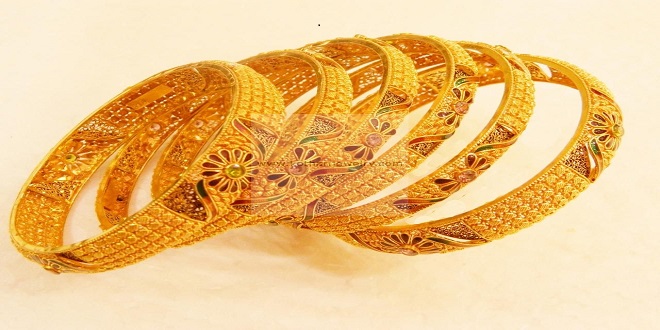The Rich Indian Heritage Of Bangles

Bangles have always been a significant part of Indian culture. It is one of the famous solah shringars that encompass sixteen steps of a women’s beautification process during her marriage. For centuries, Indian women have been adorning colourful bangles not just to enhance their beauty but to cherish their married status.
This is not all. There are plenty of stories and symbols associated with bangles in different cultures. In this article, we are trying to unveil this rich heritage and understand more about this jewellery. Let’s begin with the history:
History
The history of bangles traces its roots back to the times of Mohenjo-Daro settlements that were found on the banks of Indus River in what we today call Pakistan. A British archaeologist discovered a statue of teenage girl in an excavation in Mohenjo-Daro in 1937. The girl was wearing bangles in one arm and nothing else. The statue is called “Dancing Girl” and it is the evidence that bangles have been an accessory in the Indian culture for nearly 5,000 years.
The bangle bracelets have also been found in ancient Mayan, Mauryan, Roman and Indian ruins. They were made of terracotta, stone, copper, shells, glass and other similar materials.
In addition to this, Indian culture has a very specific symbol for bangles. It is an important wedding jewellery for Indian brides. Glass bangles, are especially, meant for good luck and safety in marriage. The tradition continues even till today with married women wearing bangles as a daily jewellery.
Types of Indian Bangles
From glass bangles to diamond bangles, there is a wide variety of bangles you can find in the Indian market. We have jotted down some of the most popular types of bangles based on different Indian cultures. Read and find your favouite ones:
- Rajasthani Bangles
If you love colours and intricate designs, we are sure you would be happy to have some Rajasthani bangles. The three most famous ones are lakh bangles (made of resinous substance known as lac), Rajputi bangles (ivory chooda that is made worn by brides on wedding day), and Jaipuri bangles (have detailed work with floral patterns).
- Kundan Bangles
Mostly found in the Rajasthan-Gujarat region, Kundan bangles are one such type of bangles that are often worn by brides on the wedding day. Kundan jewellery is quite popular in modern brides. Its fame comes from the intricate designs. There is also a wide variety available in Kundan bangles. You can have golden bangles with colourful diamonds or choose monotone bangles with grey diamonds.
- Punjabi Bangles
Punjabi bangles are quite famous. They are red and white choodas that are supposed to be worn by newly-wed women for a certain period of time after the wedding. During the wedding day, choodas have “kaliras” attached to them. These kaliras are also associated with a fun ritual. It is believed that if the one of the Kalira falls on a bridesmaid, she will be the next one to get married. Nowadays, this ritual is being followed by non-Punjabi brides too.
- Bengali Bangles
Bengali bangles are quite different. There is one type that is known as loha bangles. They are open ended and are best for daily basis. You can also try Saankha Pola or Pola bangles. They are a combination of white and red bangles. The red ones are made from red corals while the white ones are made with conch-shells. They look absolutely stunning with a Bengali red and white saree.
- Kerala Bangles
As you move to the Southern region, you will find a strong influence of gold in the jewellery department. This is why gold bangles are extremely famous in Kerala. They are made of pure gold and have elaborate designs. And guess what? Kerala bangles are not restricted to married women. From girls to old women, everyone adorns these bangles.
Done reading? It is time to find what you like the most and start shopping. We are sure you are going to love them all.





